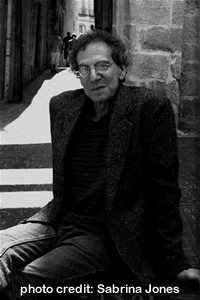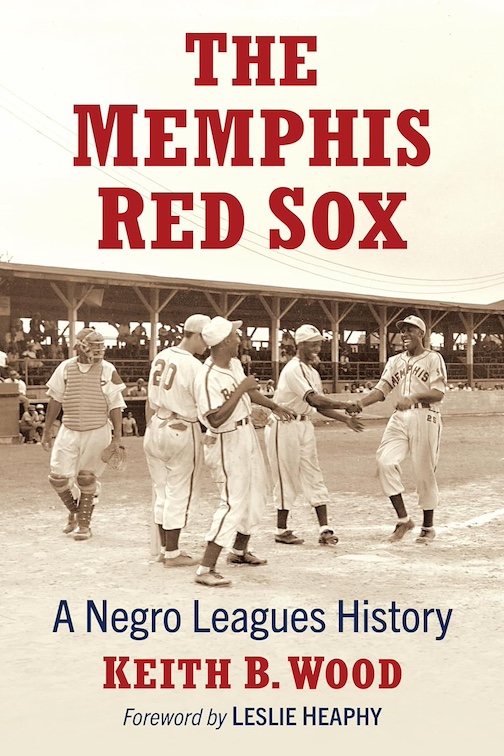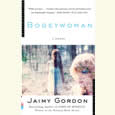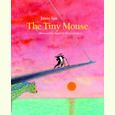Tradition on Ice
Memphis writer Steve Stern answers questions about The Frozen Rabbi, his novel about tradition, hedonism, and “quick-fix enlightenment.”
Novelist Steve Stern has become the ad hoc spokesman for the Pinch, a long-ignored Memphis neighborhood that was once that city’s Jewish ghetto. Like his previous work, much of Stern’s latest novel is set there, its rich and conflicted history providing the ideal locus for the author’s tale of shamanistic self-interest and tradition gone awry. In The Frozen Rabbi , an ancient holy man, who was frozen while in a meditative state, comes under the care of a family of secular Jews who have lost contact with both their tradition and each other. When the rabbi is accidentally defrosted, he takes the Karp’s lethargic son as his disciple. As the boy struggles to reach spiritual enlightenment, the rabbi reinvents himself as a modern-day self-help guru whose contradictory prescription for happiness treads on scandalous ground.
Steve Stern is a Memphis native who teaches at Skidmore College in upstate New York. His 2000 collection The Wedding Jester won the National Jewish Book Award, and his novel The Angel of Forgetfulness was named one of the best books of 2005 by The Washington Post. In a recent email exchange, Stern answered questions from Chapter16.
Chapter 16: Is the Rabbi Eliezer ben Zephyr entirely fictional? I’m wondering if you based the character on a similarly provocative and entertaining rabbi—perhaps from history or your own childhood.
Steve Stern: Rabbi ben Zephyr is perhaps not an altogether pure invention. In Yiddish folklore, as in every other, there is the figure of the trickster, the scoundrel and deceiver who profits from the gullibility of willing dupes. It’s a role in which the prophet Elijah is often cast, who returns to earth from paradise in a variety of disguises. His tricks seduce the sinful into receiving their just deserts; though just as frequently the deserving might receive from his bag of tricks a miscellany of blessings—sometimes even enlightenment. This was the kind of archetypal character I had in mind when I conceived the rabbi, though he’s admittedly a bit stingy in the blessings department. I also had in mind the so-called Kabbalah Centers that have proliferated all over the planet and have been made popular by the likes of Madonna and other celebrities. These institutions, staffed by charlatans, have managed to traduce a prodigious mystical tradition, stripping it of all complexity and numinous dimension. What remains is a dejudaized, New Age, feel-good exercise in hedonism with virtually nothing in common with authentic Kabbalah.
Chapter 16: Along those lines, are there any similarities between you—or someone you know—and Bernie, the Karp’s long-suffering, adolescent son?
 Stern: Well, Bernie Karp and I both have acne. Beyond that, there’s the fundamental ignorance of Jewish heritage that we both shared. Bernie’s participation in the defrosting of the frozen rabbi is his entrée into the past. His developing intimacy with the rabbi’s origins is his introduction to the drama of the Diaspora and the long comet’s tail of history and culture that drama involves. Thereafter his consciousness must expand exponentially in order to accommodate that experience.
Stern: Well, Bernie Karp and I both have acne. Beyond that, there’s the fundamental ignorance of Jewish heritage that we both shared. Bernie’s participation in the defrosting of the frozen rabbi is his entrée into the past. His developing intimacy with the rabbi’s origins is his introduction to the drama of the Diaspora and the long comet’s tail of history and culture that drama involves. Thereafter his consciousness must expand exponentially in order to accommodate that experience.
I had what I think of as an analogous experience in the mid-80s when, working for a folklore center in Memphis, I discovered the locus of a vanished Jewish ghetto community. Through oral history interviews with the survivors of that community, I was able to reassemble a world that (thanks to my upbringing in a Reform synagogue that had more or less covered its tracks with regard to the past) I hardly knew anything about. Bernie’s sense of wonder in the presence of the thawed holy man is meant to duplicate my own awe at reviving the old North Main Street community. It was for me an experience tantamount to—if you’ll forgive the hyperbole—raising a lost continent out of the sea.
Chapter 16: The Frozen Rabbi presents its readers with a kind of reverse Enlightenment, whereby the utilitarian advances of the modern age are supplanted by the superstitions and magical properties of the past. Modern culture has cool stuff, “but it ain’t got a soul,” says the rabbi. Are you aware of a particular strain of rabbinic scholarship that supports this view?
Stern: There’s nothing very new in the rabbi’s assessment, or under the sun. Ever since the invention of the self and all the “-ishness” that followed hard upon, the philosophers and theologians have been telling us that technology and materialism have usurped the role of the spiritual in human life. The Jews have no monopoly on this attitude, and in acknowledging it the rabbi is merely stating the obvious. But rather than attempt to restore the souls of his adherents, Rabbi ben Zephyr pursues an entirely antinomian strategy; he embraces the fallen world with an unholy zeal. Offering quick-fix enlightenment and a soupçon of magic, he cultivates a following he can exploit for his own lascivious and material ends. In this way he enjoys compensation for what he missed during a lifetime of piety and righteousness. Remember that when he was frozen his soul remained aloft while his body was left to endure a long period of suspended animation. As a consequence, it becomes Bernie’s self-appointed mission to replace the rabbi’s AWOL soul with his own.
Chapter 16: The Frozen Rabbi makes a lot of “Yinglish” and Yiddish black humor—at one point, for example, as the rabbi hovers close to death, a follower asks if he’s comfortable. “I make a livink,” the rabbi replies. What distinguishes Jewish humor from its WASPier counterparts?
Stern: Volumes have been written on this subject, and I doubt I have anything new to add. I suspect that in these assimilated times the distinction between gentile and Jewish humor has become pretty blurred—but if you’re talking specifically Yiddish humor, the distinction obtains. The humor generated from the Diaspora experience was bred in a language with a built-in sense of irony. You can hear it in the rhythms and inflections of every spoken phrase. Irony was a natural function of a language that evolved in a world defined on the one hand by oppression, persecution, and poverty, and on the other by a natural intimacy with the sacrosanct. To maintain one’s religious faith in the face of such a hostile environment is to preside over the marriage of irreconcilable opposites, a rocky relationship at best and one that seldom achieves wedded bliss. (Morris: “How come I never know when you’re having an orgasm?” Ethel: “Because you’re never around.”)
 It’s an absurd situation, really, when it isn’t tragic, and so every joke is marked by a fatalism never far from galgenhumor, gallows humor. It’s a world in which the schlemiel is Everyman. (Dying father to his son: “Bring me a piece of Mama’s strudel.” Son: “Mama says it’s for after.”) And reality holds dominion over all. (A converted Jew and a hunchback walk past a synagogue. The convert: “I used to be a Jew.” The hunchback: “I used to be a hunchback.”) It’s a humor that has internalized centuries of the dominant culture’s contempt, leaving it colored with a bisl self-loathing; though as in the B’rer Rabbit tales of slave lore, the schlemiel, if he doesn’t get the last laugh, at least provides the excuse for it. Like I say, volumes have been written.
It’s an absurd situation, really, when it isn’t tragic, and so every joke is marked by a fatalism never far from galgenhumor, gallows humor. It’s a world in which the schlemiel is Everyman. (Dying father to his son: “Bring me a piece of Mama’s strudel.” Son: “Mama says it’s for after.”) And reality holds dominion over all. (A converted Jew and a hunchback walk past a synagogue. The convert: “I used to be a Jew.” The hunchback: “I used to be a hunchback.”) It’s a humor that has internalized centuries of the dominant culture’s contempt, leaving it colored with a bisl self-loathing; though as in the B’rer Rabbit tales of slave lore, the schlemiel, if he doesn’t get the last laugh, at least provides the excuse for it. Like I say, volumes have been written.
Chapter 16: At one point you write that, “the young tended to read the signs differently, and many were fed up with a religion predicated on anticipation and the suffering one must endure in the protracted meantime.” You’re writing about radicalism in the not-too-distant past, but do those words apply to young Jews today?
Stern: Frankly I’m out of touch with the attitudes of young Jews today. The attitude expressed in the quote from The Rabbi reflects the essential impatience of all thinking youth toward justice or dreams deferred. It’s an impatience that takes many forms, of course. For nineteenth-century Jewish youth, that impatience generally resulted in either an embrace of Zionism or revolution, both options constituting a radical break with the authority of the old order, be it organized religion or the state. It was a spirit that persisted throughout the twentieth century, manifested in the early labor movements and a multitude of other crusades for social justice.
The same spirit was in evidence among the politically active, idealistic young Jews of the 1960s—those who went on freedom rides and demonstrated against the war. Outside of the political arena, however, that youthful impatience has sometimes taken less rational and pragmatic courses of action. Many members of my generation, in search of transcendence and instant illumination, swallowed pills and the half-baked bromides of gurus and cult leaders. Rabbi ben Zephyr’s followers are late examples of this particular strain of seeking. The paradox is that the rabbi, with his new-age methods, also embodies something of the romance of old-world magic and all that entails. He’s both a twenty-first-century mountebank and a Kabbalistic sorcerer, and his charisma is derived in large part from the rich tradition he represents, despite his best efforts to subvert it.
Chapter 16: The rabbi’s statement, “Praise God who permits the forbidden,” recalls the Sabbatean Heresy of redemption through sin. Could you explain the rabbi’s take on this concept for readers not familiar with it?
Stern: You’re the first to have caught references to the Sabbatean Heresy in The Frozen Rabbi, and for that you win a date with Barbara Streisand.
In praising God who permits the forbidden, Rabbi ben Zephyr is repeating the infamous catchphrase of Sabbatai Zvi, the sixteenth-century pseudo-messiah. His doctrine of “redemption through sin” involved the somewhat illogical mystical notion of descending into the depravity of the fallen world in order to restore that world to the celestial realm. (The concept has points in common with the more familiar concept of tikkun, which involves returning the scattered sparks of divinity to their sacred source in order to reconsecrate the marriage of heaven and earth.) The process of defiling oneself and overturning every tenet of Torah was supposed to be a prerequisite for ushering in the messianic age. Sabbatai fulfilled this process by ultimately converting to Islam, which effectively curtailed his claims to messiah-hood. Rabbi ben Zephyr revives the concept for the purpose of licensing his own promiscuity and justifying the financial exploitation of his flock, which seems to work.
Chapter 16: Do strains of the Sabbatean Heresy exist within Judaism today?
Stern: If any vestiges of Sabbatai’s mad heterodoxy remain in the contemporary world, I’m sure I don’t want to know.
Chapter 16: Much of The Frozen Rabbi—and much of your previous work—is set in Memphis, which has historically had a strong Jewish community. The New York Times went so far as to suggest that you may be “the poet laureate of the Tennessee Jews.” What is it about the Jewish experience in Tennessee, particularly Memphis, that’s distinctive?
Stern: What’s distinctive to me about the Memphis Jewish community is that I have some acquaintance with it, though often the community I write about is one I never had any first-hand knowledge of. I’m talking about the North Main Street neighborhood known as the Pinch, which I mentioned previously—the place I discovered during my tenure at the Center for Southern Folklore.
I had been writing fiction for some time before I encountered the Pinch, and had surprised myself by the appearance in my fiction of characters with predominantly Jewish names. That superficial nod to nomenclature was the extent of my connection to heritage, and I wondered at my own impulse to make the gesture. Then something about the discovery of an Eastern European ghetto enclave right there on North Main Street in the very heart of Dixie shook me to the core. Why that was I’ve never really been able to say, and I suppose it’s the mystery that I cherish most about my infatuation with the place. It was in any case the beginning of my fascination with Yiddishkeit and with a culture, history, and lore that persists to this day.
I’ve been sorting through the baggage that those original immigrants brought with them—the stories, dreams, and superstitions—for several decades now, and whenever I believe I’ve exhausted the operation, some new item—a rabbi encased in a block of ice, a golem in an attic, a fallen angel—turns up, and the love affair begins all over again. The discovery of the Pinch provided me with a ready-made, haunted environment for my stories to happen in. (So grateful were the survivors of that neighborhood for my mythologization of their community that they sued me for a quarter of a million dollars, but that’s another story.) I’ve ranged far from North Main Street in my fiction and often thought I’d kicked the dust of the place off my heels, but I always return. It’s home, for better or worse, and its bracing atmosphere—made electric from the friction between largely opposing but sometimes symbiotic traditions—generates the energy I still seem to be running on.
[This interview appeared originally on August 17, 2011. It has been updated to reflect Steve Stern’s forthcoming Nashville appearance.]
Steve Stern will appear at Vanderbilt University in Nashville on October 3, 2013, in Buttrick Hall, Room 101, at 7 p.m. The event is free and open to the public.





